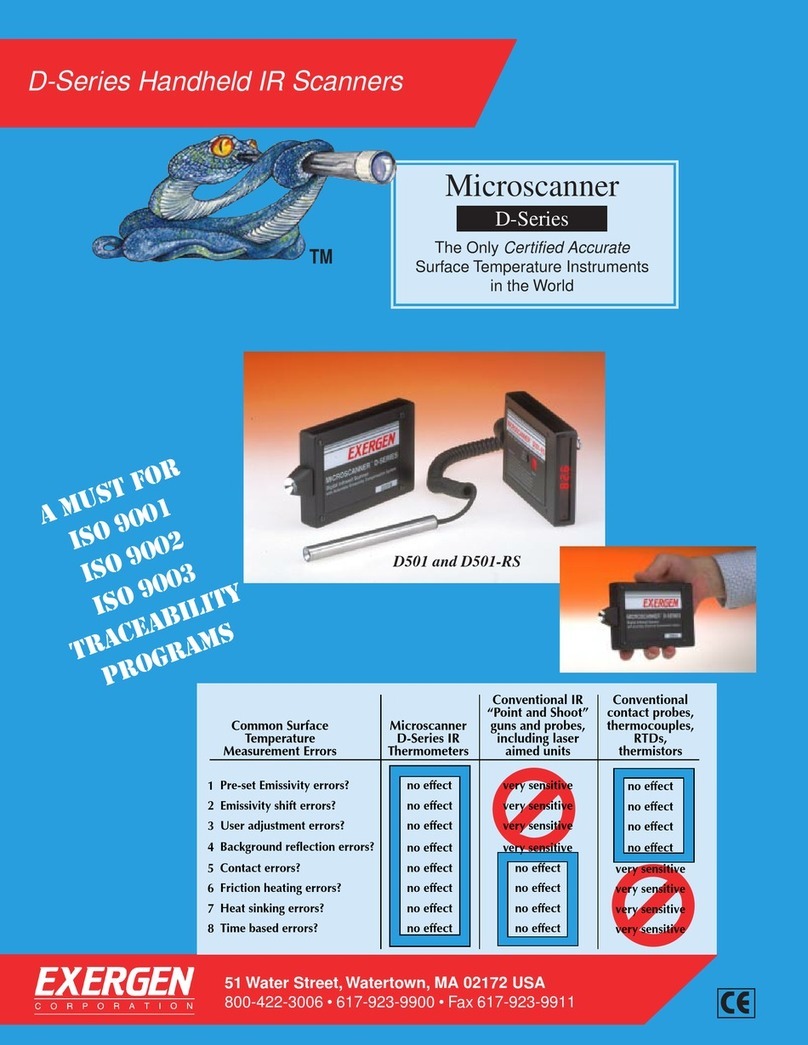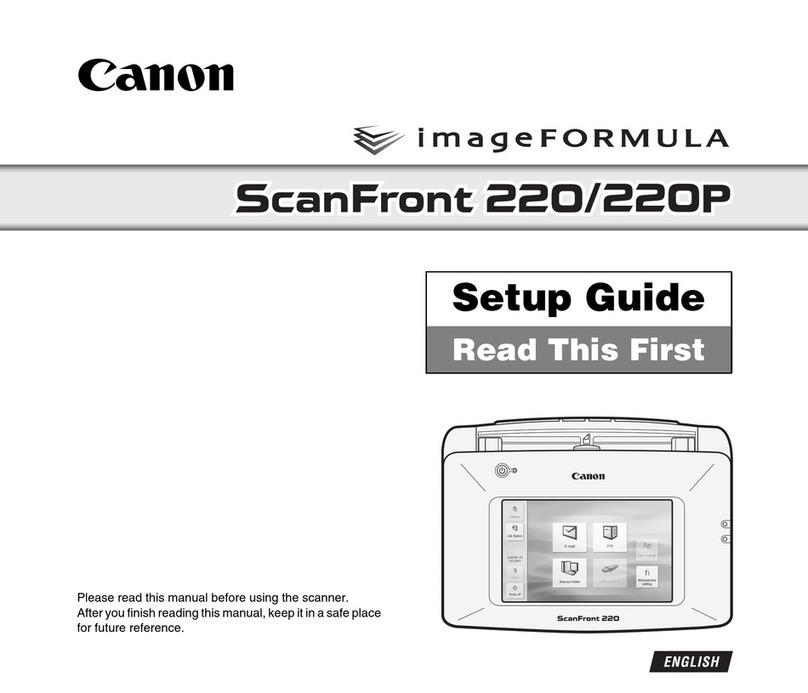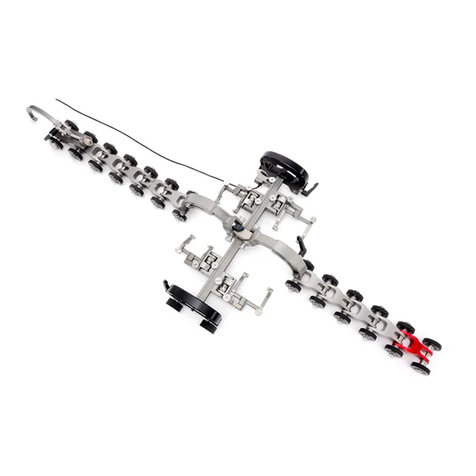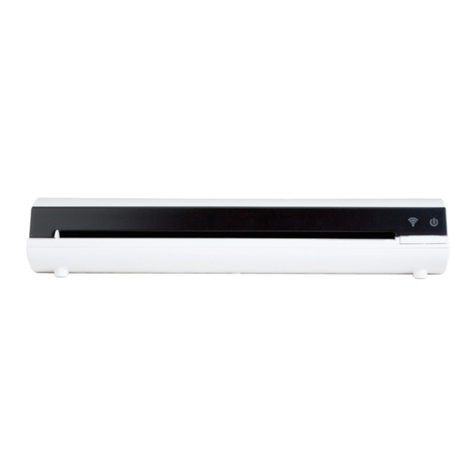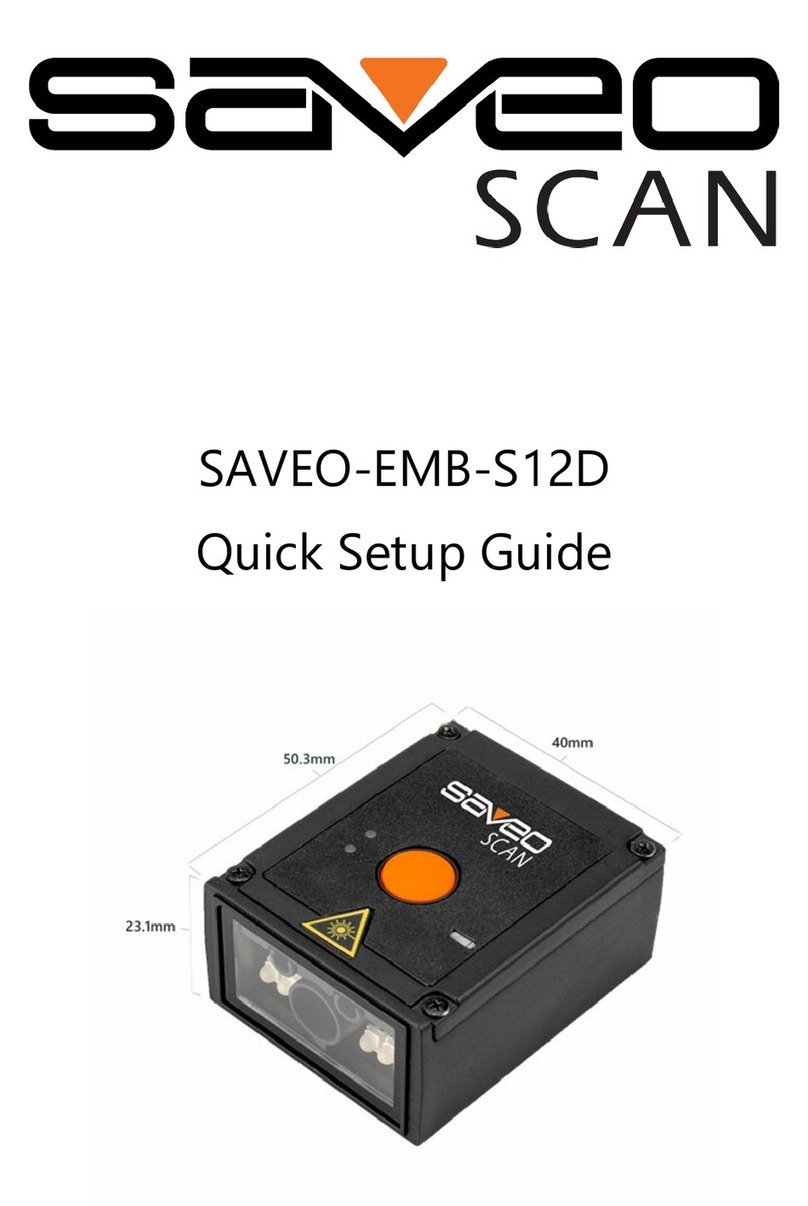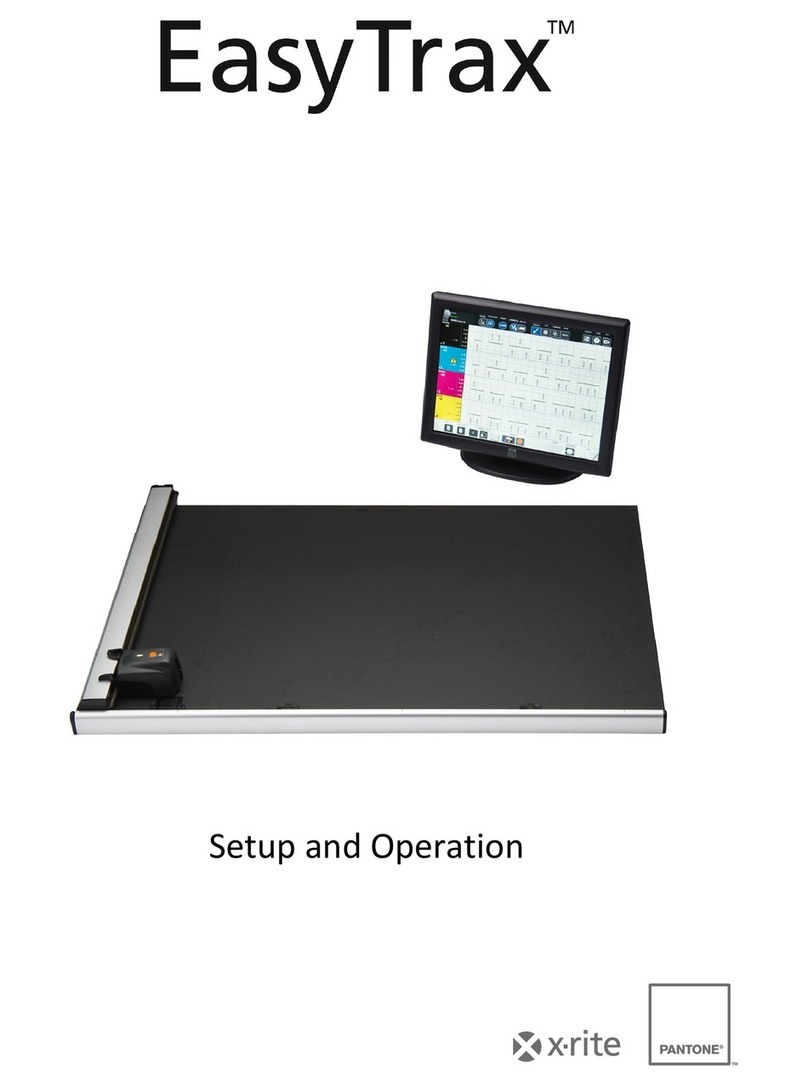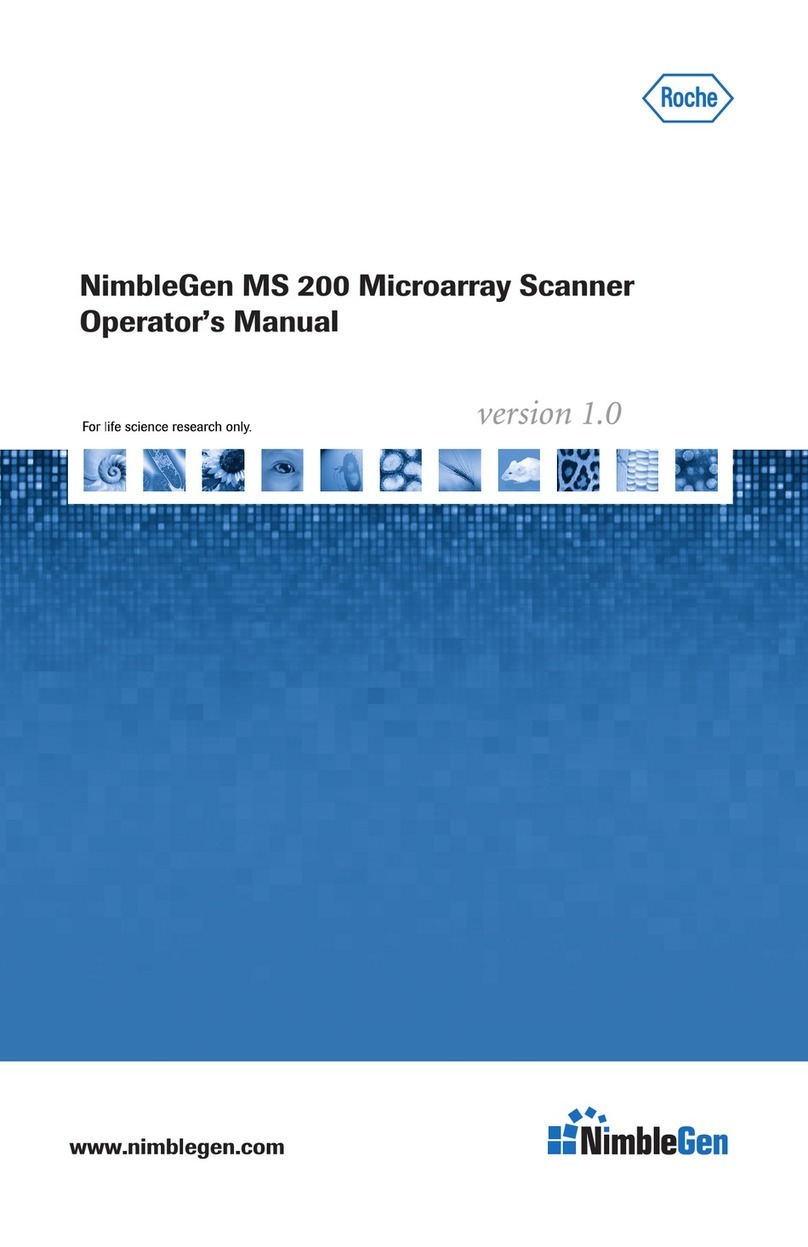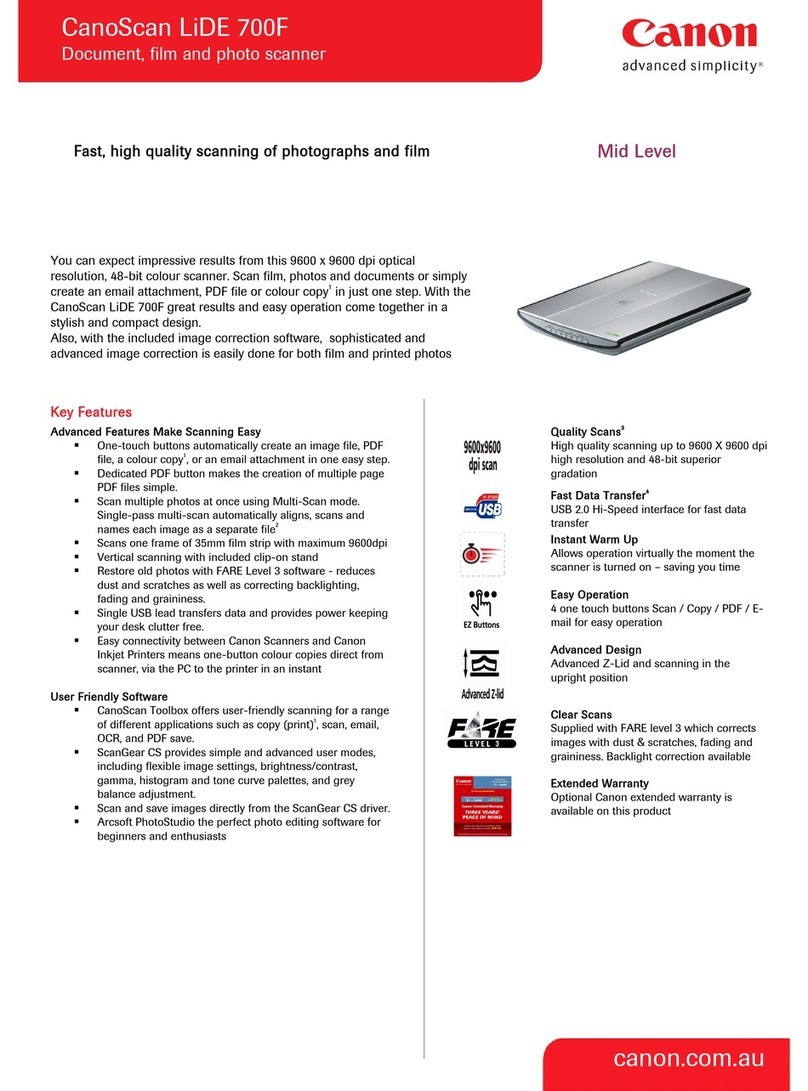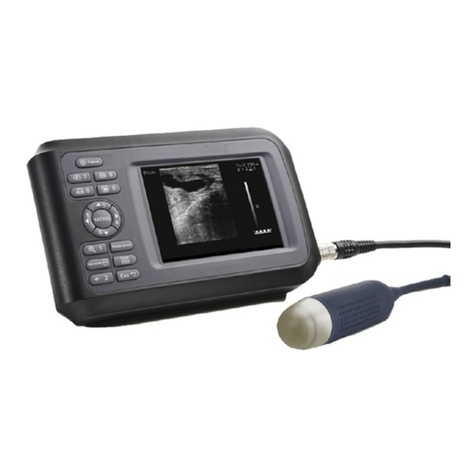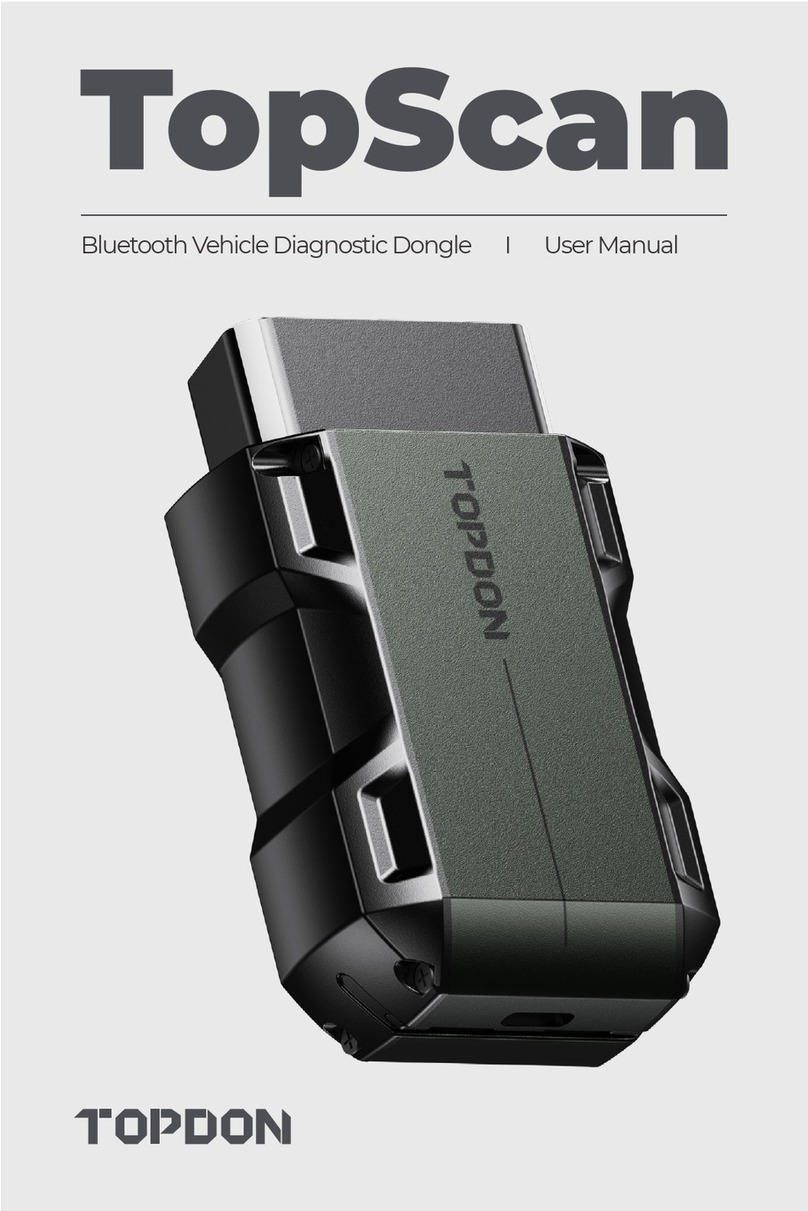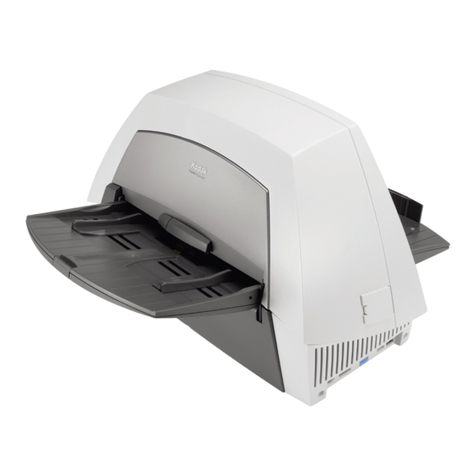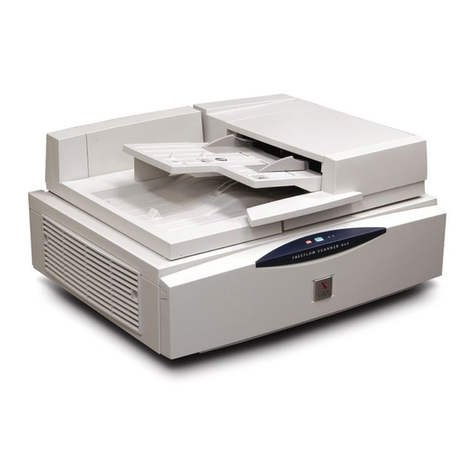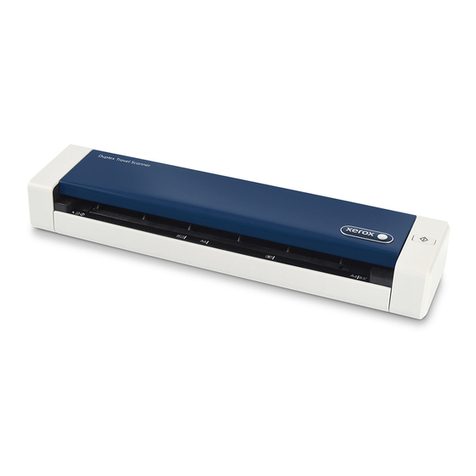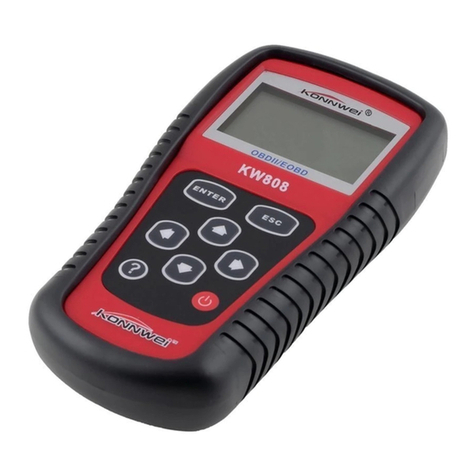Exergen DT 1001 User manual

EXERGENEXERGEN
EXERGENEXERGEN
EXERGEN
DermaTemp 1001
Infrared Thermographic Scanner
Unparalleled Accuracy
. . .at the Speed of Light
USER’S MANUAL
AND REFERENCE
BOOK

Table of Contents
I. The Instruments............................................................ 1
The Instruments’ Features................................................. 2
Optional Disposable Covers............................................... 2
Instructions for Applying Disposable Covers......................3
Contact vs. Non-Contact Measurements............................3
Operation and Controls...................................................... 4
ON/OFF.............................................................................. 4
To Lock Reading.................................................................4
To Restart........................................................................... 4
Operating Modes................................................................ 5
Non-Contact Scanning....................................................... 5
Changing the Battery.......................................................... 6
Fahrenheit or Celsius Conversion...................................... 6
Care and Maintenance........................................................7
Self Diagnostics..................................................................7
Customer Service............................................................... 8
II. Body Surface Temperature..........................................9
History and Introduction......................................................9
Body Surface Temperature................................................. 10
Infrared Thermometry......................................................... 11
The DermaTemp Infrared Thermographic Scanner............13
Method Impedimenta.......................................................... 13
Ambient Effect on Body Surface Temperature................... 14
Solving the Problems..........................................................14
Emissivity............................................................................15
Alice’s Quest for Emissivity................................................ 17
Correcting for Emissivity Automatically...............................18
Detection by Exception....................................................... 18
III. Clinical Applications....................................................20
Regional Blocks..................................................................20
Epidural Catheter Positioning............................................. 21
Joint Inflammation..............................................................21
Digital Perfusion Assessment............................................ 22
Reconstructive Surgery.......................................................22
Lower Back Pain.................................................................23
Diabetic Foot Screening..................................................... 23
Peripheral Nerve Injury........................................................24
Cerebrovascular Disorders.................................................24
Neonatal Skin Temperature................................................ 25
Wound Management.......................................................... 25
Thermal Assessment of Skin Diseases and Allergy........... 26
Skin Temperature in Prognosis of the Critically Ill...............26
Temperature Gradients in Detection of Shock....................27
Raynaud’s Syndrome..........................................................27
Other Areas or Applications of Interest...............................28
IV. References.................................................................. 29
V. Product Specifications................................................ 31

I. The Instruments
The DermaTemp is a high precision hand-held infrared thermographic
scanner designed to detect the subtle skin temperature variations caused
by underlying perfusion variations.
These instruments feature a patented automatic emissivity compensa-
tion system for absolute accuracy regardless of skin type or color, and
provide an instant temperature measurement on any surface location
on the human body without the need for tissue contact.
In those applications where tissue contact is desirable or cross-con-
tamination is an issue, the use of disposable wraps or sheaths allows
even moist or wet tissue to be measured with precision accuracy.
The models include:
DT-1001 the standard model
DT-1001 LT has a conveniently angled stainless steel probe,
and can be used with or without disposable probe
wraps
DT-1001 LN has a longer probe than the DT-1001, and can
be used with or without a disposable sheath. The
sheath encases the entire instrument.
DT-1001 RS has a remote stainless steel sensor attached to
the instrument by cable, convenient for those es-
pecially hard to reach areas.
All instruments can be cleaned with any hospital approved disinfectant,
including bleach, and can be gas or plasma sterilized.
The DermaTemp is recommended for use in such areas as plastic and
vascular surgery, anesthesiology, pain management, rheumatology,
neurology, oncology, and wound management.
1

The Instruments Feature:
• Full range resolution to 0.1°F/C
• SCAN, MAX and/or MIN modes of operation, model specific
• Fahrenheit/Celsius conversion
• A 10-second display lock
• An audible beeper to signal functional or conditional changes
• Hermetically sealed sensing system to withstand gas and plasma
sterilization, and cleaning with any hospital approved disinfectant
including bleach and alcohol.
• Pencil-like stainless steel sensor on the RS version.
• Optional disposable cover usage:
-Complete encasement with disposable sheaths for the LN
version.
-Full probe covering with disposable wraps for the LT version.
Optional Disposable Covers
The use of disposable covers with the DT-1001 LT is optional, depend-
ing on the requirements of the application. Recommended guidelines
are as follows:
Use With Disposable Cover
For absolute accuracy, minimizing the effects of emissivity and
evaporative cooling, contact with the measurement site is recom-
mended. Accordingly, when direct contact is employed, use of a
disposable probe cover is recommended.
When touching moist tissue, use of a disposable cover is required
specifically to avoid a lower temperature from the effects of evapo-
rative cooling, and to protect against the risk of cross contamina-
tion.
Use Without Disposable Cover
If the measurement site is dry, direct contact can confidently be
made without the use of a disposable cover. When the site is dry
and the precise temperature is not a prerequisite, the measure-
ment can be made without even contacting the skin. The probe
can be cleaned with any hospital approved disinfectant, even bleach
solution.
2

Contact vs. Non-Contact Measurements
In using any infrared temperature device, closer is always better, as the
field of view increases proportionately to the distance from the surface.
Accordingly, for maximum accuracy the probe must contact the sur-
face at the point of interest. It does not need to be tightly pressed to the
surface; a gentle touch is all that is required.
When contact with the surface is not an option, position the probe within
1/2 inch from the surface of interest. If using a non-contact protocol,
the relative temperature indication of the instrument will be accurate.
4
Release pinch. Pull box slightly away
until next white ring is visible. Pinch
ring, break film apart at perforation.
3
Rotate instrument into film until probe
faces opposite direction, push ring on
peg.
1
Start with film perforation at edge of
box tongue. Pinch bottom of white
ring, push ring over peg.
2
S
to
p
at Per
f
orat
i
on
Release pinch, gently pull box away
from probe to release film from box.
Pinch just below next ring, before per-
foration.
3
Instructions for Applying Disposable Covers
Model 1001 LT Only

Operation and Controls
The DermaTemp infrared thermographic scanner models 1001, 1001
LN, LT and RS are all identical in performance and specifications. All
are maximized for ease of use. The remote sensor on the RS version
can either be left attached to the instrument for one-handed operation,
or separated for use in hard-to-reach areas of interest. The LN and LT
models can be used with or without disposable covers
Using the DermaTemp
The DermaTemp is equipped with an ON/OFF power button and a mode
selector switch, model specific. The mode selector switch allows you
to choose one of the three modes of operation, SCAN, MAX, or MIN.
The LT model is designed in a peak select mode, and automatically
selects and locks the highest reading when the ON/OFF button is
released.
ON/OFF:
To turn the instrument on, depress the red ON/OFF power push but-
ton. The single beep will audibly indicate that the instrument is on.
The display will momentarily read 8888,
an indication that the microprocessor is
performing a self-diagnostic check. Af-
ter the test, the unit will measure and dis-
play temperature in the selected operat-
ing mode for as long as the power button
is depressed.
To Lock Reading:
Release the red ON/OFF button to lock reading on display. The single
beep will audibly indicate that the display is locked. The DermaTemp
will hold the last reading on the display for 10 seconds before it auto-
matically turns off.
If you are using a DermaTemp 1001 LT, the highest temperature mea-
sured will be retained before automatic turn off.
To Restart:
Depress the button anytime to restart. It is not necessary to wait until
the display is clear. The DermaTemp automatically recalibrates each
time the button is depressed.
4

Operating Modes (Model Specific)
•SCAN: In the SCAN mode, the target’s instantaneous tempera-
ture is continuously displayed and updated 10 times per second
for as long as you keep the button depressed. After the power
button is released, the display will lock on the last temperature
measured and hold that reading for 10 seconds.
•MAX: In the MAX (peak hold) mode, the display will lock on the
highest temperature measured for as long as you hold the power
button down. Each time a new peak temperature is measured or
repeated, an audible beep will sound. After you release the power
button, the display will lock on the maximum recorded tempera-
ture and hold that reading for 10 seconds.
•MIN: In the MIN (valley hold) mode, the display will lock on the
lowest temperature measured as long as the power button is de-
pressed. Each time a new low temperature is measured, a beep
will sound. After the power button is released, the display will lock
on the minimum recorded temperature and hold that reading for
10 seconds.
Non-Contact Scanning
For situations where even light contact is contraindicated, bring the
instrument nose as close to the measuring site as safely possible, keep-
ing the following in mind:
The instrument’s field-of-view, also referred to as the distance-to-
spot ratio, is 1:1. A 1:1 field-of-view means that the sensor sees
a circular area with a diameter equal to the distance between the
sensor and the target area.
For example, at a distance of 2 inches (5 cm), the sensor sees a 2
inch (5 cm) diameter spot. The minimum spot size is approxi-
mately 1/4 inch (6 mm) when touching.
The DermaTemp averages the temperature of everything in its
field-of-view.
A small hot spot may get lost in a large viewing area. The closer
you hold the instrument to a surface, the sharper its target resolu-
tion.
5

Changing the Battery
A standard 9-Volt alkaline battery will require replacement only once or
twice per year under normal use. To replace, loosen the four captive
screws and remove the cover. Disconnect the old battery and replace
with a new one in the same location. Replace the cover and tighten the
four screws. Use only high quality alkaline batteries or their equivalent.
Fahrenheit or Celsius Conversion
The DermaTemp can be used in either °F or °C. The only tool neces-
sary to convert from one scale to the other is a paper clip.
•Find the small hole on the
left side of the red display
filter.
•Straighten the paper clip.
•Insert the end of the pa-
per clip into the hole and
push to activate the small
switch underneath.
•While holding the paper
clip pressed into the switch, turn the instrument on by pressing
the red button.
•Remove the paper clip.
•To return to the original setting, repeat the process.
9-Volt Alkaline
Battery
Captive Screws
1. Push and hold
2
.
P
us
h
6

Care and Maintenance
Handling
Your DermaTemp is designed and built to industrial durability stan-
dards in order to provide long and trouble-free service. However,
it is also a high precision optical instrument, and should be ac-
corded the same degree of care in handling as you would provide
other precision optical instruments, such as cameras or otoscopes.
Calibration
Factory calibration data is installed via a computer through an op-
tical link with the microprocessor. The instrument automatically
self-calibrates each time it is turned on using this data, and will
never require recalibration. If readings are not correct, the instru-
ment should be returned for repair.
Cleaning
The DermaTemp can be gas or plasma sterilized, or wiped down
with any hospital approved disinfectant, even bleach. With nor-
mal use, the only maintenance required is to keep the lens on the
end of the probe clean. It is made of special mirror-like, infrared-
transmitting material called Germanium.
Dirt, greasy films or moisture on the lens will interfere with the
passage of infrared heat and affect the accuracy of the instru-
ment. If necessary, clean the lens with an alcohol prep or a cotton
swab dipped in alcohol. Periodic cleaning is a good practice.
Self Diagnostics
Continuous Single Beeping
The high performance DermaTemp continuously monitors its abil-
ity to produce accurate temperature readings. If either the target’s
temperature or the unit’s ambient temperature exceeds the opera-
tional limits, the beeper will sound once per second and the LED
display will default to a display message.
When the target temperature is outside of the instrument’s oper-
ating range, the unit will display either HI or LO and will beep con-
tinuously at one beep per second. When the instrument’s own
temperature is outside operating limits for ambient temperature,
the display will show either HI A or LO A, and will beep continu-
ously at one beep per second.
7

Continuous Double Beeping
The battery voltage is also monitored. A low battery is indicated
by a continuous double beep per second. Temperatures will con-
tinue to be displayed as long as accuracy can be assured. If the
battery drops below 5.7 volts, it is considered “dead” and the dis-
play defaults to
(——).
Customer Service
If repair is required:
•Contact Exergen for a Return Materials Authorization Num-
ber (RMA).
•Mark the RMA number on the outside of your package and
packing slips.
•Include a description of the fault if possible.
•Send the instrument freight/postage prepaid to
Exergen Corporation
51 Water Street
Watertown, MA 02172
Attention: RMA_______
•The instrument will be returned freight/postage prepaid.
Questions:
Should you have any clinical or technical questions, please con-
tact a customer service representative in the medical division at
Exergen Corporation. They may be contacted either by phone
(617-923-9900), fax (617-923-9911) or email to
8

II. Body Surface Temperature
History and Introduction
As early as 2800 BC, the Egyptians, using the scanning sensitivity of
the fingers over the surface of the body, recognized that the body pro-
duces heat, and that heat increases with disease. Further recognizing
the distinction between local inflammation and fever, the Egyptians set
the foundation for monitoring body surface temperature as a separate
and distinct diagnostic methodology from the monitoring of core body
temperature.
But the ancient diagnostic technique
of feeling for heat is highly subjec-
tive, and only as sensitive as the
hand of the feeler. The test of tem-
perature is relative to the detector.
A cold hand will indicate a warm
body surface that a warm hand will
indicate as cold. Certainly, the hand
of an experienced physician laid upon the skin could provide much use-
ful information about the temperature of the patient and the course of
an illness, but eventually a more objective assessment was possible
with the introduction of the clinical thermometer developed during the
last century.
One of the earliest references to actually quantifying body surface tem-
perature as a clinical diagnostic was in 1864 during the Civil War. Dr.
Jackson Chambliss, a surgeon in the Confederate Army, used a ther-
mometer to diagnose a traumatic femoral aneurysm by showing that
surface temperature was decreased distally in the affected leg. 1
In more recent times, the measure-
ment of the surface temperature of
the human body has not been rou-
tinely undertaken in many clinical en-
vironments - not because the mea-
surement lacks clinical significance,
but because it has been difficult to
acquire. Conventional mercury or
electronic thermometers have gen-
erally been ineffective for surface
temperature measurements for three reasons: 1) they are difficult to
properly attach to the body surface, 2) they require a significant amount
of time for the sensor portion of the device to equilibrate to the body
Typical 19th Century Thermometer
9

surface temperature and 3) they are prone to low readings because it is
not always evident that the surface thermal connection is adequate.
Body Surface Temperature
Heat signatures vary considerably over the
surface of the human body, and physicians
have long appreciated the relationship be-
tween heat and disease. In fact as early as
400 BC, Hippocrates wrote “In whatever
part of the body excess of heat or cold is
felt, the disease is there to be discovered.”1
Undoubtedly the earliest use of clinical ther-
mography, Hippocrates found when he cov-
ered his patient’s body with wet clay, the mud
dried quicker on the diseased area, thus pre-
senting a crude but dramatic demonstration
of the heat signatures.
It is impossible to define the surface tem-
perature by any single normal value, since it
is the result of a thermal balance between
energy supplied from the core via perfusion
and energy lost to the environment via radiation, conduction, convec-
tion, and evaporation. All objects, whether animate or inanimate, ho-
meothermic or poikilothermic, radiate electromagnetic energy (radia-
tion) to the surroundings at a rate dependent on its temperature. In
accordance with a basic law of physics, this invisible radiation is con-
stantly emitted, absorbed, and re-emitted by everything in our surround-
ings so that thermal equilibrium can be maintained. A simple example:
left in normal room temperature, a cup of hot coffee quickly cools and a
glass of iced tea quickly warms to the temperature of the room.
If the human eye had the optical power to see the emitted radiation,
which has all the same properties as a beam of light, but differing in
wavelength, all mankind would have an incandescent glow. Because
the temperature over the surface of the human body changes at a rapid
rate in response either to its external environment or to its internal con-
trol mechanism, the incandescence would be quite bright over some
areas and quite dark over others. This variability of the temperature
pattern gives question as to its significance, and yet it is a remarkable
indication of the underlying body physiology.
All biological tissue generates energy in proportion to the metabolic ac-
tivity occurring within the cells. About 80% of the energy developed by
Thermographic scan of
the patient with clay on
his body. (Dorex, Inc. CA)
10

the human body is converted into heat, with the balance converted into
external work or into tissue growth. The circulatory system, in addition
to circulating blood for its metabolic characteristics also distributes heat,
thus replacing the heat energy lost to the environment, as well as nour-
ishing the tissue. The resultant increase in heat energy delivered by the
blood causes the temperature to rise until the heat energy lost to the
environment again balances with the heat delivered.
It has long been recognized that where there is injury or infection, there
is inflammation, but injury or infection of itself does not create heat
energy. When there is trauma, whether an injury or abnormal stimula-
tion caused by a physical, chemical, or biologic agent, a pathologic
process of reactions occurs in the blood vessels and adjacent tissues
in response to the perturbation. The natural defense mechanism trig-
gered immediately increases the flow of blood to the area of concern,
causing the temperature to rise in proportion to the increase in blood
flow. However, the maximum temperature can be no higher than that
of the core arterial supply to the trauma tissue.
Consider as a simple analogy, the action of washing your hands in a
sink. If the water from the hot faucet were to be trickling in a small
stream, it is likely it would feel only lukewarm. However, if you were to
open that tap full force, the rushing water would feel quite hot. But, no
matter how intense the rush, the water could never be hotter than the
water from its source of heat, the furnace.
The ancient diagnostic technique of feeling for heat over the body is a
longtime indicator of inflammation. While localized temperature eleva-
tions may be felt merely by the touch of the hand, the technique is
highly subjective, and not sufficiently sensitive to detect the subtle
temperature rises indicative of increased cellular or metabolic activity.
With the introduction of infrared techniques, accurate surface tempera-
ture patterns are immediately quantifiable and any changes easily de-
tected. It is this knowledge that enables us to study any disease pro-
cess resulting in a change in heat generation or thermal properties of
the tissue.
Infrared Thermometry
Temperature is a fundamental property of all matter related to its en-
ergy content, and can be described by a numeric value expressed on a
scale of temperature. A human’s touch produces an instinctive sense
of hot or cold to judge the relative temperature of two objects. How-
ever, as a practical matter, clinicians must have a temperature scale
that is independent of the observer, by which unknown temperatures
11

can be evaluated. With a proper temperature scale, measurements
taken at different times or places can be compared. Without a ther-
mometer, it would be impossible to measure the temperature of a hu-
man with respect to a fixed scale of reference. Remember, the human
test of temperature is relative to the detector. A cold hand will indicate
a warm body surface that a warm hand will indicate as cold.
Numerous techniques and devices are employed in the measurement
of temperature. Many of these techniques, such as the use of glass
mercury thermometers or electronic display devices using thermo-
couples or thermistors, are generally understood and as a result well
accepted in clinical medical practice. All three of the devices have one
very important characteristic: they measure their own temperature, not
the temperature of the object being measured, except in an indirect
way. In order to make an accurate temperature determination using
one of these measurement techniques, it is necessary for the device to
have intimate contact with the subject for sufficient time to raise the
temperature of the thermometer to the same, or close to the same,
temperature as that of the subject. Thermal contact thermometers re-
quire too much time to equilibrate, are sensitive to variations in contact
pressure resulting in changes in the thermal resistance between the
skin and the temperature detector, and tend to have too great a varia-
tion from reading to reading. If these devices are not properly located,
properly attached, or left in place for enough time to equilibrate, they all
will give incorrect readings.
The infrared method is fundamentally different from the other methods
in that there is no temperature device to heat. Like an eye, the infrared
instrument simply looks at the heat radiation naturally emitted from the
body surface. Since there is nothing to heat, the measurement can be
made very fast, orders of magnitude faster than the probe devices.
Historically, most of the published clinical data on body surface tem-
perature measurements are based on the use of infrared thermogra-
phy. Infrared thermography has long been recognized as a reliable,
highly technical diagnostic tool, and refers to the process of recording
and interpreting variations in temperature of the surface of the skin in
color or shades of gray. The clinical information is contained in the
relative temperature profiles. The technique is effective, but the equip-
ment is complex and expensive.
Decades ago, the common image of a computer was that of an enor-
mous, very expensive piece of equipment, something requiring an en-
vironmentally controlled room and complex installation. Today’s com-
puters have been reduced to hand held units. Infrared thermography
12

was not a lot different: large and expensive, requiring environmentally
controlled rooms, trained technicians, and exotic gases. Today’s ad-
vanced technology makes it possible to put the power of infrared ther-
mography in the palm of your hand, at a fraction of the cost of all previ-
ous techniques. While there are a variety of infrared thermometers avail-
able, only one is designed specifically to meet the stringent clinical re-
quirements, the DermaTemp Infrared Thermographic Scanner.
The DermaTemp Infrared Thermographic Scanner
The DermaTemp is a high precision hand-
held infrared thermographic scanner de-
signed to detect the subtle skin tempera-
ture variations caused by underlying per-
fusion variations. These instruments in-
stantly measure temperature on any sur-
face location on the human body without
the need for tissue contact.
The Dermatemp is highly recommended
for use in plastic and vascular
surgery,anesthesiology, pain manage-
ment, rheumatology, neurology, oncology,
and wound management. Other applica-
tions follow this section.
Infrared thermometry is fast, stable, repeatable, and is relatively insen-
sitive to user technique. Skin temperature measurements with infrared
thermometry are attractive because they are objective, low cost, and
cause absolutely no trauma or discomfort to the patient. The versatility
of the products allows for absolute temperature measurement, surface
scanning, and comparative methods of temperature differential.
Method Impedimenta
Despite the tremendous benefits of using infrared technology for clini-
cal applications, there are several impediments which should cause
pause, such as variable skin characteristics, wet skin, and environ-
mental influences. Since the process of measuring temperature by view-
ing the infrared radiation of the surface is significantly faster than the
other techniques mentioned earlier, the user needs to be aware of sev-
eral important considerations. The surface temperature of the human
body is sensitive to the external environment and can vary by several
degrees in a short period of time. Drafts will lower the surface tem-
perature. A cold room environment will lower the surface temperature.
Any surface moisture will lower the surface temperature. Exercise will
raise the surface temperature due to increased perfusion as a ther
DermaTemp DT 1001 and
DT 1001-RS
13

moregulatory response. Exposure to the sun or any other warm sur-
face will raise the surface temperature. The user needs to be aware of
these concepts and not be surprised in the event the temperature read-
ings are not as expected.
Ambient Effect on Body Surface Temperature
The cardinal rule of interpretation of skin temperature is that the same
environment will produce the same temperature if perfusion is the same.
If the environment is the same and the temperature is different, then
perfusion must be different. But body surface temperature can be
significantly influenced by the temperature of the surrounding environ-
ment as evidenced in the table.
Effect of Ambient Temperature on Skin1
Ambient Hand Forehead
4°C 8.9°C 13.7°C
23°C 26.9°C 29.2°C
27°C 33.2°C 33.2°C
Therefore, absolute temperature readings must be interpreted in rela-
tion to the environment, and the practitioner should be careful to protect
the patient from drafts or exposure to large cold surfaces, to position
the extremities to minimize pooling, and to allow time for the surface
temperature to equilibrate to its environment.
The distribution of the temperature on the body surface is generally
bilaterally symmetric. This symmetry can form the basis for clinical
interpretation of the surface temperature data. The temperature data
from the normal or reference area can also be used to adjust for the
circadian variations and for variations in the temperature environment.
In general, it is the relative readings between the body surface tem-
peratures that is of interest.
Solving the Problems
The DermaTemp is the result of many years of active
scientific research in both the technology and clinical
requirements. The patented reflective cup on the probe
of the DermaTemp provides accuracy heretofore un-
available for clinical use. The instrument is completely
unaffected by conditions prohibiting the use of other
infrared devices. Because of its unique design, the
classical problems in producing accurate temperatures
have been solved.
14
Reflective cup
on probe tip

Emissivity
An important concept needed to understand how temperature is mea-
sured using infrared radiation is the one of emissivity. Emissivity is a
surface property which determines just how well an object’s tempera-
ture can be measured by an infrared device. Emissivity (along with
background thermal radiation) is the primary source of errors in infra-
red temperature measurement. Emissivity can be more easily under-
stood if it is realized that infrared has similar properties to visible light.
Simply stated, emissivity is the opposite of reflectivity. A perfect mirror
has a reflectivity of unity and an emissivity
of zero. A perfect black body has an emis-
sivity of unity and a reflectivity of zero. In
actuality, all real bodies (including human
ones) have an emissivity between these two
limits.
It is not possible to accurately measure the
surface temperature of any body with an
emissivity of less than 1.0 without making
a correction for this source of error. Hu-
man skin is near but not equal to 1.0 and, if
not accounted for, can introduce errors in
the order of one to two degrees. The cup-
like mirror used in the nosepiece of the DermaTemp scanner removes
this source of error by trapping all of the radiation from the skin surface
and in effect causing the skin surface to act like a black body with an
emissivity of 1.0.
Mirrors figure prominently in the discus-
sion of heat radiation and emissivity.
Since heat and light radiation behave the
same way, we can use what we see with
our eyes as examples of what the
DermaTemp sees. When you look in the
mirror, you see only reflections, nothing
of the mirror itself. If the mirror is per-
fect, it has 100% reflectivity. Because it
reflects everything, it emits nothing. For
this condition, the emissivity is zero.
If we consider an imperfect mirror, the eye then sees mostly reflection,
but also some of the imperfections on the mirror surface. If, for ex
Poor Emitter
Emissivity = 0.1
Reflectivity = 0.9
1.0
15
Blackbody
Emissivity =1.0
Reflectivity = 0.0
1.0

ample, we saw 90% of the mirror as a perfect reflector and 10% as
imperfections, 90% of the mirror would reflect; the remaining 10% would
emit. Therefore, the emissivity equals 0.1.
Consider for a moment the exact opposite of
a perfect mirror, which is a perfect emitter.
The eye looks at a perfect emitter and sees
no reflection at all, only the emitting surface.
Since 100% of the surface emits, and 0%
reflects, the emissivity equals 1.0. This type
of object is called a blackbody.
And finally, consider a good emitter. The eye
sees a small amount of reflection interspersed
with the large amount emitting. If, for ex-
ample, 10% of the surface did not emit, and
instead reflected, then we would have 10%
reflecting and the remaining 90% emitting.
Therefore, the emissivity equals 0.9. Accordingly, we can state the
following rule of emissivity: The emissivity of the surface is simply
the percentage of the surface that emits. The remaining percent-
age of the surface reflects.
Good Emitter
Emissivity = 0.9
Reflectivity = 0.1
1.0
16

17
Alice’s Quest for Emissivity
Is it possible to see a mirror?
When the mirror is looked at, all other objects in the
room are seen.
Is it invisible?
No, if it were, the wall would show behind it.
So how can it be seen?
If crayon spots are painted on the mirror, then the
mirror can be seen.
Of course, it can only be seen where there are spots.
Everywhere else still reflects.
Thus, light is emitted from the spots
and reflected from the non-spots.
(Full reprint available from Exergen)

Correcting for Emissivity Automatically
Biological tissue has
high emissivity, i.e.
~0.95. Accordingly,
the reflected compo-
nent will be about 5%
of the energy mea-
sured by the
DermaTemp, which
translates to an abso-
lute error of ~1°F
(0.5°C). In addition, skin emissivity varies due to color, texture, etc.
over the approximate range of 0.92 to 0.98. An uncertainty of approxi-
mately ±1°F (0.5°C) results from this emissivity variation, which can
appreciably influence the assessment of a subtle perfusion issue.
A more significant er-
ror is due to the re-
flected energy, which
can vary considerably
if the ambient radiation
includes sunlight, radi-
ant warmers, etc. To
solve this problem the
DermaTemp is
equipped with a unique
patented feature called
Automatic Emissivity
Compensation System
(AECS). The reflective
cup on the end of the probe automatically compensates for emissivity
when it is touching, or brought to within approximately 1mm of the sur-
face. By excluding ambient radiation, and replacing it with reflections
of emitted radiation, the emissivity is corrected, and the accurate tem-
perature indicated
Detection by Exception
The distribution of the temperature on the body surface varies appre-
ciably. For example, on a normal individual, the highest average skin
temperature is the forehead at 34.5°C (±0.73°C) and the lowest aver-
age temperature is the toes at 27.1°C (±2.72°C).1Considering the
temperature of the skin is highly influenced by ambient temperature,
one could wonder what diagnostic role, if any, temperature would play.
The answer is that it plays a significant role, and the reason is the
N
o
AECS
AECS active
When AECS is active, ambient radiation is excluded
and replaced by reflections of emitted radiation.
Ambient T (F)
90
94
98
102
106
110
0 20 40 60 80 100 120
Conventional Infrared
DermaTemp
38
43
32
4 162738
d
e
g
F
deg C
Effect of ambient temperature on infrared device
readings for a surface at 38ºC (100ºF) with
emissivity 0.9.
18
This manual suits for next models
4
Table of contents
Other Exergen Scanner manuals
